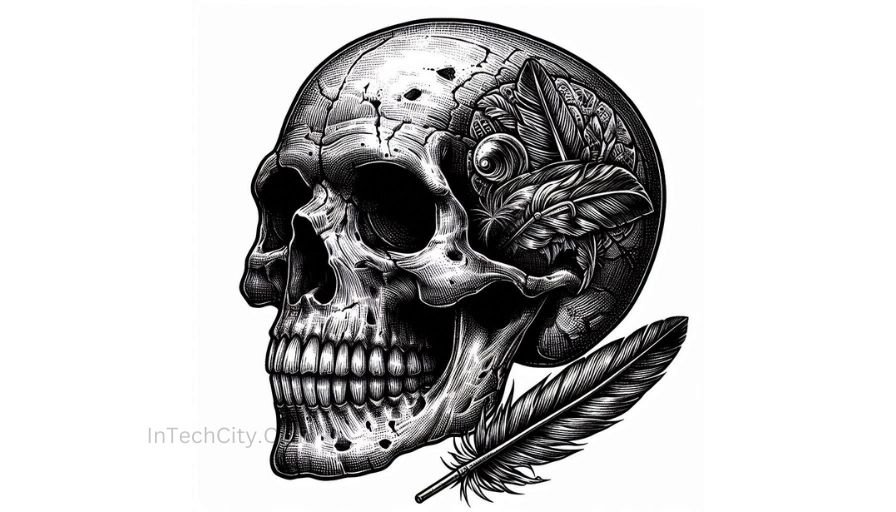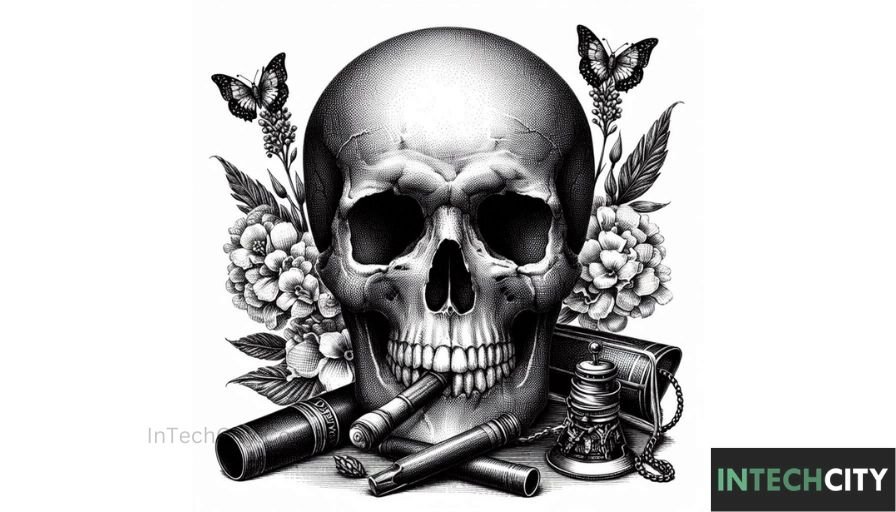Drawing skulls can be a captivating and versatile artistic endeavor, blending anatomical precision with creative expression. Whether you’re a budding artist or a seasoned illustrator, understanding the intricacies of skull drawing can enhance your skills and broaden your artistic repertoire. This guide will walk you through the steps and techniques to master the art of drawing skulls.
The Basics of Skull Drawing
To begin your skull drawing, start with a light sketch outlining the fundamental shapes and proportions. This basic framework will serve as the foundation for your detailed work.
Step-by-Step Guide
Step 1: Basic Outline
- Sketch the general shape of the skull, including the cranium, mandible, eye sockets, nasal cavity, and teeth.
- Use light, loose lines to allow for adjustments.
Step 2: Defining the Features
- Refine the outline by adding more precise lines for the cheekbones, jawline, and individual teeth.
- Draw the eye sockets as deep, hollow circles and add the nasal cavity as a triangular shape.
Step 3: Adding Detail
- Focus on the smaller details, such as the cracks and crevices of the skull.
- Emphasize the texture and depth by varying line thickness and shading.
Step 4: Shading and Texturing
- Use hatching, cross-hatching, and stippling techniques to create realistic shadows and textures.
- Pay attention to the light source and how it affects the shadows and highlights on the skull.
Tips for Realistic Skull Drawing

Understanding Skull Anatomy
- Study human skull anatomy to grasp the accurate proportions and structure.
- Familiarize yourself with different parts of the skull, such as the frontal bone, parietal bone, occipital bone, and zygomatic bones.
Practicing Proportions
- Practice drawing the skull from various angles to understand its three-dimensional form.
- Use reference images and anatomical models to enhance your accuracy.
Experimenting with Styles
- Experiment with different artistic styles, such as realism, abstraction, or surrealism.
- Use various mediums, like pencils, charcoal, or digital tools, to explore different effects.
Common Mistakes to Avoid
Incorrect Proportions
- Ensure that the proportions of the skull are accurate by measuring and comparing different parts.
- Avoid making the skull too elongated or too wide.
Overlooking Details
- Pay attention to small details like the sutures (joints between skull bones) and the texture of the bone.
- Don’t rush through the detailing process; take your time to add depth and realism.
Ignoring Light Source
- Always consider the direction of the light source when shading and highlighting.
- Incorrect lighting can make the drawing look flat and unrealistic.
Advanced Techniques
Using Reference Images
- Collect a variety of reference images to study different skull shapes and structures.
- Use these references to practice and improve your drawing skills.
Exploring Creative Variations
- Experiment with creative variations, such as combining skulls with other elements like flowers or geometric shapes.
- Use your imagination to create unique and visually striking compositions.
Incorporating Symbolism
- Explore the symbolic meanings associated with skulls in different cultures and artistic contexts.
- Incorporate these symbols into your drawings to add depth and narrative.
Conclusion
Mastering the art of skull drawing requires practice, patience, and a keen eye for detail. By understanding the anatomy, practicing proportions, and experimenting with different styles, you can create realistic and expressive skull drawings. Remember to take your time, study from references, and continuously refine your techniques. Happy drawing!
FAQs
What materials are best for skull drawing?
- Pencils, charcoal, and ink are commonly used for skull drawing. Each medium offers different effects and textures.
How can I improve my shading techniques?
- Practice hatching, cross-hatching, and stippling to create realistic shadows and textures. Study how light interacts with different surfaces.
Are there any specific exercises for improving skull drawing skills?
- Regularly practice drawing skulls from different angles and lighting conditions. Use reference images and anatomical models to enhance your understanding.
Can I draw skulls in different artistic styles?
- Yes, skulls can be drawn in various styles, including realism, abstraction, and surrealism. Experiment with different styles to find your unique artistic voice.
Where can I find reference images for skull drawing?
- Reference images can be found in anatomy books, online image libraries, and museums. Studying real skulls or high-quality photographs is beneficial.


